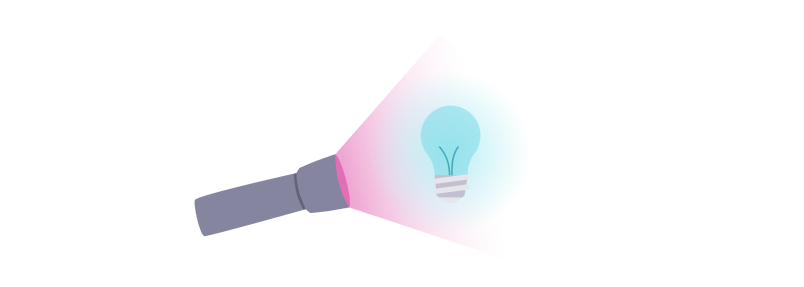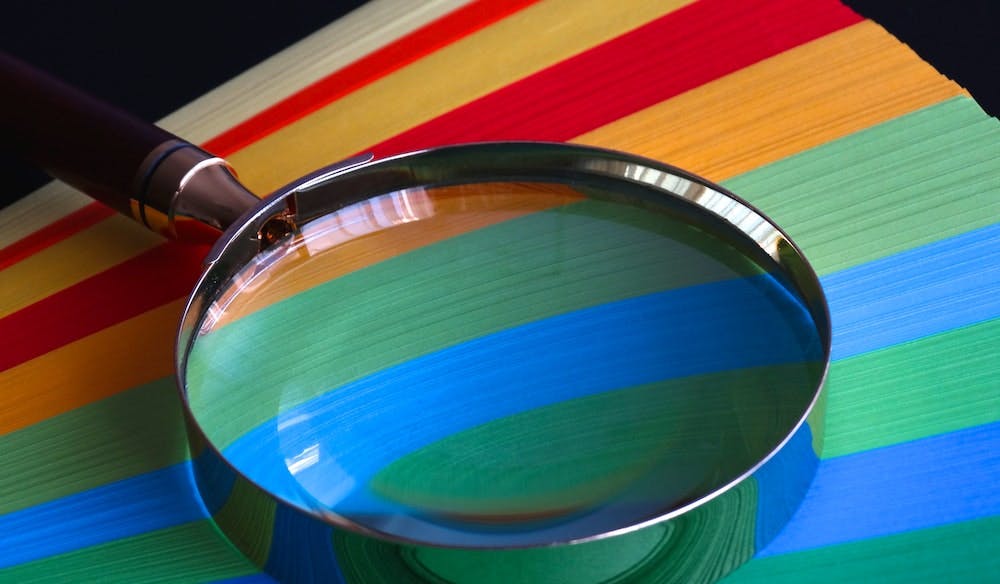Updated: January 24, 2024 - 8 min read
As a Product Manager (PM), you’ve probably encountered the term “product discovery”, but what exactly does it mean, and why is it so important? Find out all you need to know about product discovery including its benefits, importance, the potential risks of skipping it, and the ideal moments to integrate it into your product life cycle. Oh, and of course we’ll be sharing some handy resources for PMs along the way. There’s a lot to cover so let’s dive straight in – what is product discovery?
Editorial note: This post is based on a talk on Product Discovery by Amrita Mallick, former PayPal Sr PM at American Express, and contains additional insights and examples from the Product School team. You can watch the webinar in full below.
What is product discovery?
Product discovery definition: Product discovery is the process of exploring your customers’ needs, pain points, and wishes.
Clearly, this is a vital step to building a product that genuinely benefits your customers.
And this is about more than just surface-level knowledge. To really understand their needs and prioritize the most impactful features and solutions, you’ll need to dive deep into your target consumer’s world by conducting user research. This could look like running surveys, interviews, focus groups, and usability testing, all of which will help you to create realistic and helpful user personas.
Free Resource: Get your free user persona template here

Why is product discovery important?
Imagine you’re a baker who receives an order for a woman’s 21st birthday cake. You’ve made countless cakes like this in the past, so you waste no time getting to work. The result is a masterpiece – a three-tiered showstopper covered in creamy pink buttercream frosting, decorated with edible glitter, and elaborate flower motifs. It has to be a hit, right?
But when you proudly hand it over to your client, their disappointment is clear. It turns out they’re lactose-intolerant, hate pink, and would actually have really loved a simple dark chocolate cake topped with strawberries. If only you had taken the time to find out more about your customer – you could have saved time and money, and made the cake of their dreams!
This is why it’s essential to lay the right foundation with a product discovery phase before any development work starts. This will make sure you’re working on a product that your target user actually wants and is willing to pay for, as well as helping you to prioritize those features that your users really find valuable.
Top tip: Use Product School’s Free Feature Prioritization Template to get clear direction on which features to include and which to leave out.
The benefits of product discovery
We get it, as a Product Manager, you’re always short on time. But while you may be tempted to rush or even skip the product discovery process altogether, you’d be missing out on so many benefits. Here’s how it can be a game-changer:
1. Gain a better understanding of product or feature value
For example, the integration of 'dark mode' in various apps isn’t simply a design trend. Through product discovery, it’s been determined that users find this feature not only aesthetically pleasing but also easier on their eyes, especially in low-light environments. What's more, dark mode has battery-saving properties, particularly for OLED screens, adding significant value for users.
2. More precise budgeting and reduced chances of overspending
Precise product discovery allows for a more detailed roadmap, reducing the chances of unexpected costs cropping up. Take the development of a new e-commerce platform. Without clear guidelines on feature integration, the project could easily balloon in costs due to last-minute additions or changes. With a thorough discovery phase, the budget can be tailored accurately to the project's true needs.
3. Prioritize high-value features within budget constraints
Product discovery assists in distinguishing 'must-have' features from 'nice-to-haves'. For instance, while an augmented reality try-on feature might sound enticing for an online eyewear store, discovery might reveal that users prioritize a simpler virtual try-on tool or clearer product images.
4. Avoid wasting time and money
Imagine spending months developing a feature that, in the end, doesn’t address the user’s primary needs. Scheduling the time for product discovery reduces the risk of you sinking time and money into features that users find redundant or irrelevant.
5. Price the product accurately based on its true value
Understanding the unique selling points and the problem-solving capabilities of a product can lead to more informed pricing decisions. For example, if discovery reveals that your software offers unique automation features not present in competitors, you might be able to price it at a premium.
6. Discover more valuable ideas than the initial product concept
For example, while brainstorming for a fitness app, the initial idea might center on workout tracking. However, product discovery could unveil a significant user interest in dietary tracking or mindfulness practices which can be monetized.
7. Ensures the product targets the right customer segment
Take, for instance, a new smartwatch. While it has a wide range of features, discovery might reveal that it's most valued by fitness enthusiasts due to its advanced health-tracking capabilities. This insight ensures marketing efforts can be laser-focused on this segment, resulting in better sales and more satisfied customers, which ultimately benefits stakeholders and OKRs.
Learn more about Product Discovery with Product School: Take the Product Manager Certification and learn everything you need to succeed as a Product Manager.
The consequences of skipping product discovery
Sometimes knowing the benefits of taking a certain action isn’t enough to convince key stakeholders, so let’s look at this from a different angle. What are the risks of skipping product discovery?

1. Building a product that doesn't address the actual needs of the target customers
Consider a company releasing a new photo-editing app thinking users want more filter options. However, in reality, users might have been looking for better photo-organizing capabilities. Skipping discovery could lead to a significant mismatch in product offerings versus customer expectations.
2. Wasted time and resources on a product that may not get market acceptance
The tech graveyard is filled with products like Google Glass that, while innovative, didn't resonate with a broad user base. Without proper discovery, companies risk investing heavily in products that fail to gain traction in the marketplace, leading to lost investment in terms of time, effort, and money.
3. Potential overspending and need for more budget to rectify mistakes
Imagine a scenario where, post-launch, it becomes apparent that essential features are missing from a product. Now, not only is there a need for additional development (and the costs associated with it), but there might also be a necessary marketing push to regain consumer trust, further straining budgets.
4. Negative customer reviews due to unmet needs
In the age of online reviews, a product missing the mark can face swift and public criticism. For example, a note-taking app without a sync feature might receive backlash from users who expect seamless access across devices. These negative reviews can deter potential new users and harm the brand's reputation.
5. A lack of clear direction could lead to a product that tries to serve everyone but doesn't fully satisfy anyone
The phrase "jack of all trades, master of none" can unfortunately apply to products as well. A smart speaker that tries to incorporate a coffee maker, for instance, might end up being mediocre in both functions. By not focusing on a clear user need or niche, products can end up diluting their core value, leading to a lukewarm reception from a confused target audience.
When is product discovery needed?
Now that we know the benefits and risks of not conducting a product discovery phase, let’s look at when product discovery is of most value.
1. You’re facing many unknowns
Building a product without clarity is risky. For instance, a company might consider launching a new type of home workout equipment, but without discovery, they might be unsure whether customers place more value on smart connectivity or durability. Product discovery can unveil these preferences.
2. You want to explore new opportunities
Expanding horizons without user research can lead to unanticipated hurdles. For instance, a coffee brand looking to introduce its products in Scandinavia needs to understand local coffee consumption habits, favored flavors, and even the preferred times of day to drink coffee in order to tailor their offering effectively.
3. Initiating a brand-new idea
New ideas need validation before execution. Take for instance a startup founder eager to launch a smart jewelry line that sends notifications from your phone. Without product discovery, they might not realize that their potential users are looking for subtler, fashion-forward designs and are less concerned with tech-heavy features.
4. Upgrading an existing product
Enhancements should be in line with user needs. Consider a music streaming service receiving feedback about its search functionality. Instead of haphazardly adding features, product discovery can pinpoint what users actually want – maybe it's a lyric-based search or mood-centric playlists.
5. Identifying issues or validating ideas
Every idea or perceived problem needs a reality check. A software company might believe users want more integrations, but through discovery, they find out that users are actually looking for a more intuitive interface instead. It’s important to identify this before investing in an idea.

In conclusion, think of product discovery as the bridge between your product ideas and your users' real-world needs. It ensures that every step you take is informed, resources are used optimally, and product decisions align with both business goals and user needs.
Updated: January 24, 2024


